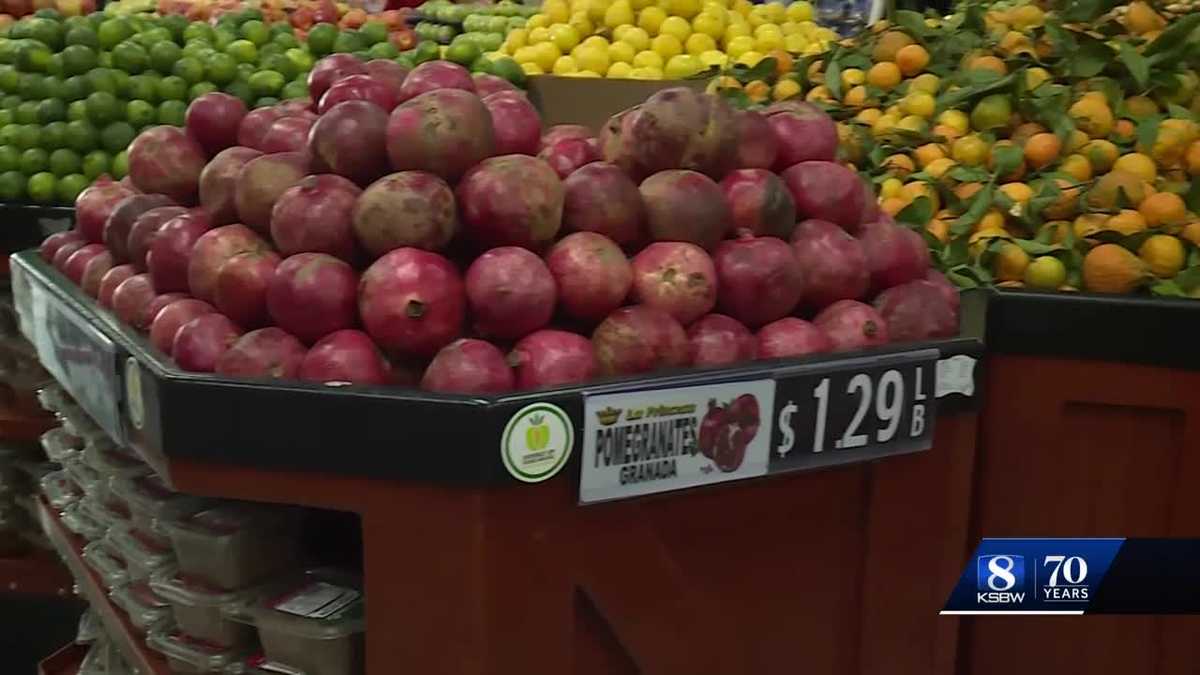
Monterey County is getting $1 million from the California Department of Food and Agriculture to help make fruits and vegetables more affordable, with a program called “Double up Food Bucks.” It allows CalFresh recipients to get 50% off on California-grown fruits and vegetables at participating locations.The “Salad Bowl of the World” is renowned for providing the finest fruits and vegetables, but many of the farmworkers who help put food on the nation’s tables often struggle to put food on their own.One in five households in Monterey County gets a paycheck from working in agriculture, yet 40% of adults are food insecure. And a third find it somewhat hard or hard to buy affordable produce.”It’s very expensive, everything. They pay us the minimum, we can’t, everything is so expensive,” says Alfredo Mendoza, a farmworker from Salinas.More than 27,000 families in Monterey County rely on CalFresh EBT. County Social Service providers say that number has been on a steady increase since the pandemic.Marta Hernandez says its difficult shopping for her large family, forced to cut back and choose cheaper options.”It was one dollar per pound and it hasn’t been that much time, now they’re very expensive $2.45. And almost the majority of the products raised in prices. Now, one has to buy less. We don’t have the luxury to buy a lot of things,” Hernandez said.With $1 million from the California Department of Food and Agriculture, Blue Zones Project and Aspire Health unveiled their latest effort to address what they say is the root cause of obesity and diabetes: affordability.The first location offering this new program is La Princessa Market, located in East Salinas.”It’s one thing to say hey, you should eat fruits and vegetables. It’s good for your health, but if people don’t have the financial means to buy more produce, then we really have a challenge,” said Genevive LeBlanc, Blue Zones Project.Officials say it’s difficult to take generational problems and make a shift, but they are hopeful these incentives be a step toward change.”We know that our community, especially the Latino community, struggles with diabetes and obesity. These are issues that we have to address with policies and programs like these. They’ll make a tremendous impact in many different ways,” said Luis Alejo, chair of the Monterey County Board of Supervisors.
Monterey County is getting $1 million from the California Department of Food and Agriculture to help make fruits and vegetables more affordable, with a program called “Double up Food Bucks.” It allows CalFresh recipients to get 50% off on California-grown fruits and vegetables at participating locations.
The “Salad Bowl of the World” is renowned for providing the finest fruits and vegetables, but many of the farmworkers who help put food on the nation’s tables often struggle to put food on their own.
Advertisement
One in five households in Monterey County gets a paycheck from working in agriculture, yet 40% of adults are food insecure. And a third find it somewhat hard or hard to buy affordable produce.
“It’s very expensive, everything. They pay us the minimum, we can’t, everything is so expensive,” says Alfredo Mendoza, a farmworker from Salinas.
More than 27,000 families in Monterey County rely on CalFresh EBT. County Social Service providers say that number has been on a steady increase since the pandemic.
Marta Hernandez says its difficult shopping for her large family, forced to cut back and choose cheaper options.
“It was one dollar per pound and it hasn’t been that much time, now they’re very expensive $2.45. And almost the majority of the products raised in prices. Now, one has to buy less. We don’t have the luxury to buy a lot of things,” Hernandez said.
With $1 million from the California Department of Food and Agriculture, Blue Zones Project and Aspire Health unveiled their latest effort to address what they say is the root cause of obesity and diabetes: affordability.
The first location offering this new program is La Princessa Market, located in East Salinas.
“It’s one thing to say hey, you should eat fruits and vegetables. It’s good for your health, but if people don’t have the financial means to buy more produce, then we really have a challenge,” said Genevive LeBlanc, Blue Zones Project.
Officials say it’s difficult to take generational problems and make a shift, but they are hopeful these incentives be a step toward change.
“We know that our community, especially the Latino community, struggles with diabetes and obesity. These are issues that we have to address with policies and programs like these. They’ll make a tremendous impact in many different ways,” said Luis Alejo, chair of the Monterey County Board of Supervisors.
